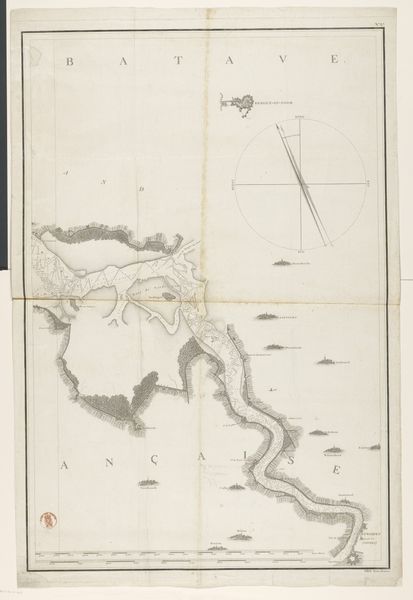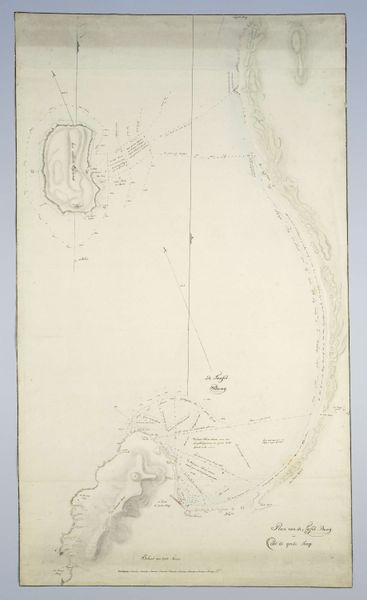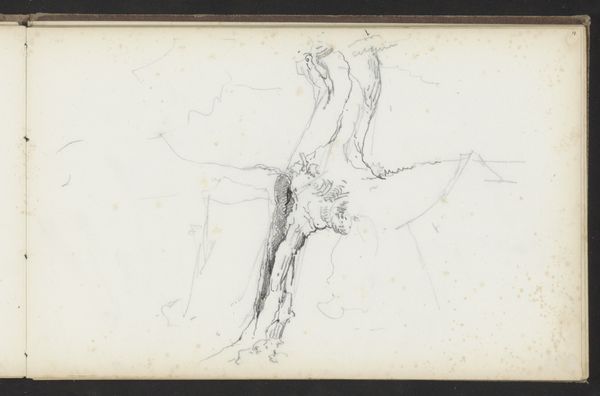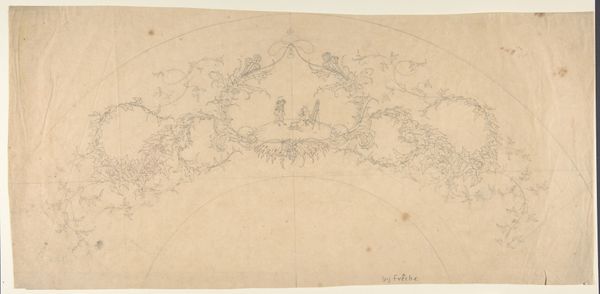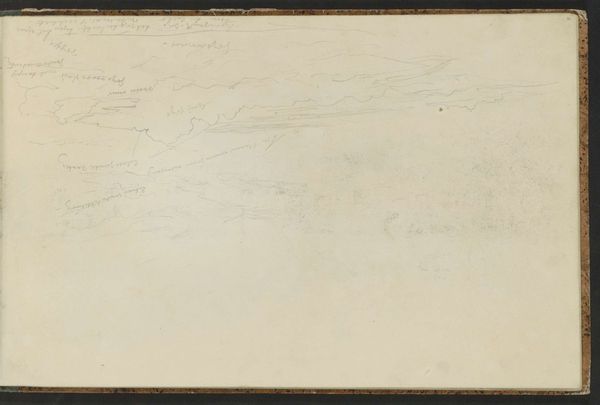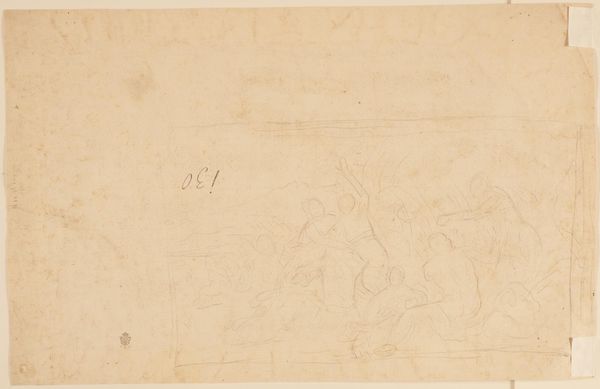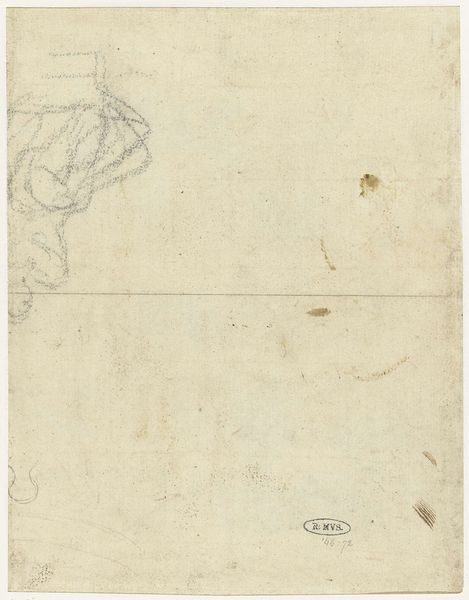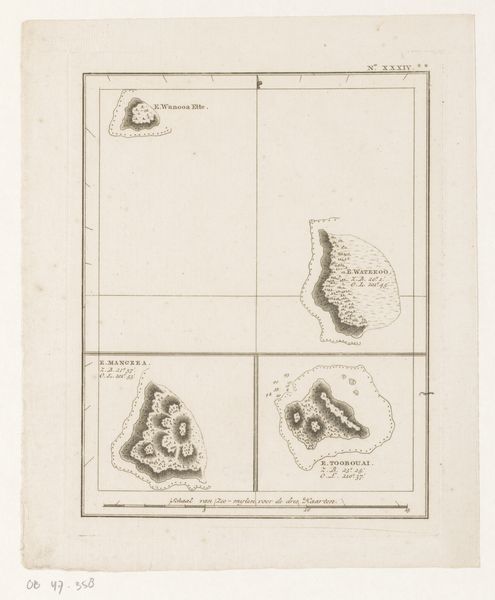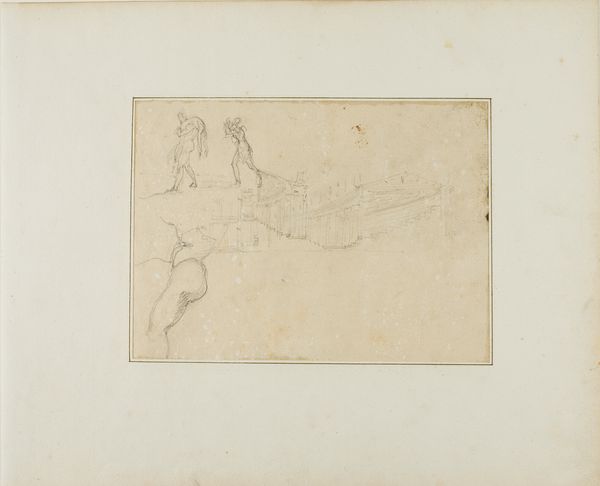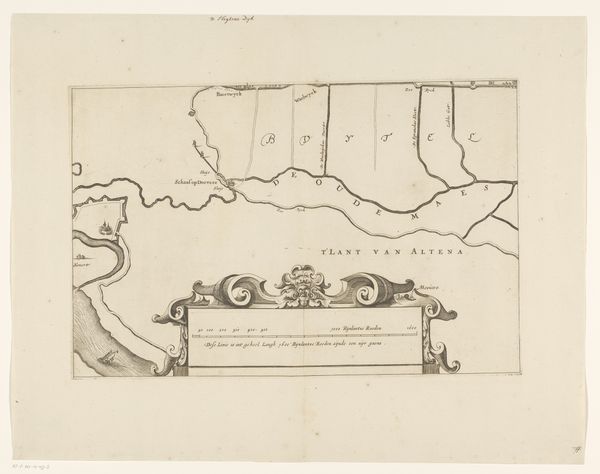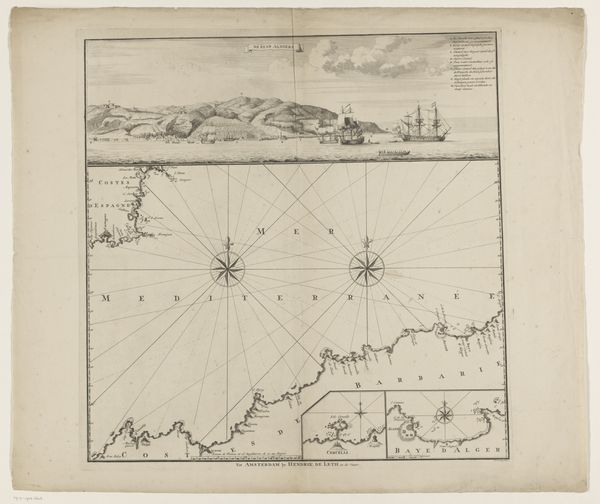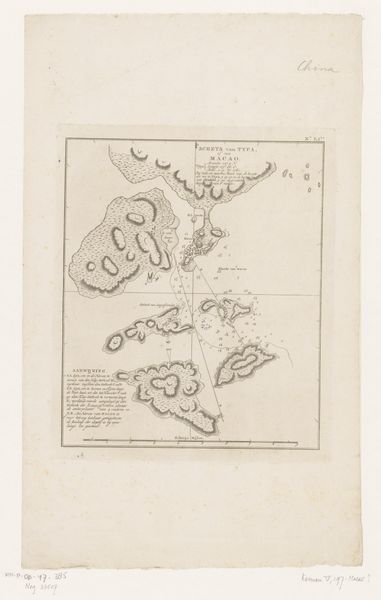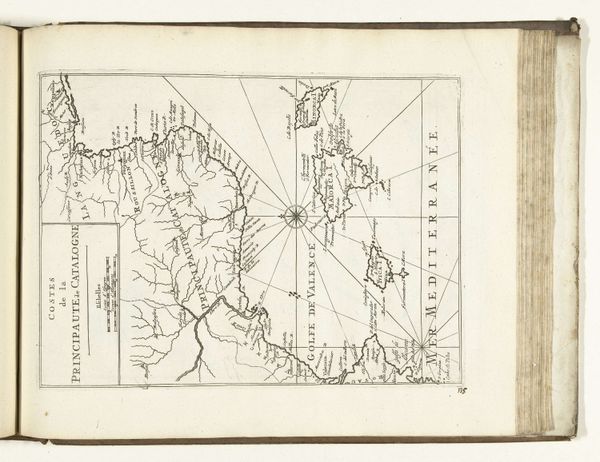
drawing, paper, ink
#
drawing
#
neoclacissism
#
landscape
#
etching
#
paper
#
ink
#
geometric
Dimensions: height 393 mm, width 298 mm
Copyright: Rijks Museum: Open Domain
Curator: Here we have "Driehoeksmeting langs een rivier," or "Triangulation along a River," an ink drawing on paper by Jan Brandes, likely created sometime between 1770 and 1808. It presents an almost ghostly depiction of a river’s edge overlaid with a network of geometric lines. Editor: My initial reaction is… intriguing! It’s like a topographical map viewed through the lens of a forgotten dream. There's a kind of delicate tension between the organic curves of the river and the rigid geometry imposed upon it. Does the image convey authority or domination? Curator: I'd say it's both a demonstration of enlightenment reason, as well as a beautiful example of Neoclassical landscape aesthetics. These measured landscapes offered a sense of control over nature through scientific accuracy. Triangulation, the core of this technique, represents that desire to categorize the world into comprehensible units. Note how each peak becomes a station for calculation. Editor: Calculation! But look at the softness, the way the ink bleeds slightly into the paper. There’s a vulnerable quality, isn’t there? The light grey washes make the mapped area seem ethereal, almost as if the land is receding from the imposed grid. Is it a map or an elegy for nature itself? Curator: I see it more as a synthesis of the empirical and the artistic. Brandes was an explorer and a minister who recorded a vast number of exotic scenes of colonial settlements with this analytical approach, though the style borrows much from 18th-century Dutch landscape painting. Each triangle represents an intersection of cartography and cultural vision. Editor: So, it is a way of possessing a place, through knowing, delineating, representing! The geometric framework becomes a cage as much as a key. Now I see a darker symbolism – control of nature and perhaps control of colonized lands under the guise of objective survey. Curator: I concur with your suggestion on potential colonial influence here. The drawing reveals the psychological impact of imposing a grid onto fluid space—nature molded to serve humanity. Editor: In this convergence of art and science, where control confronts wildness, Jan Brandes exposes a cultural act, making you ponder its hidden stories within each softly smudged line and rigidly calculated angle. It stays with you long after you walk away.
Comments
No comments
Be the first to comment and join the conversation on the ultimate creative platform.
